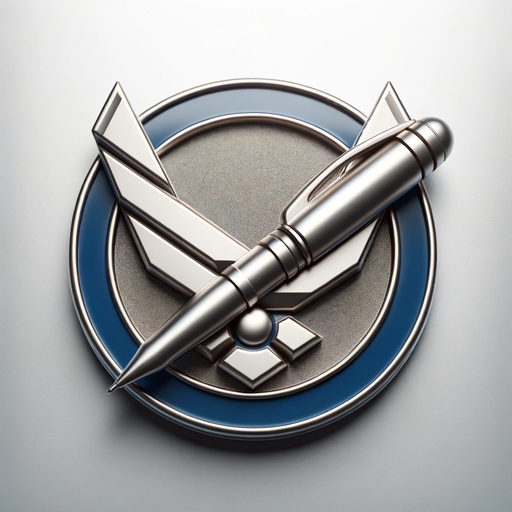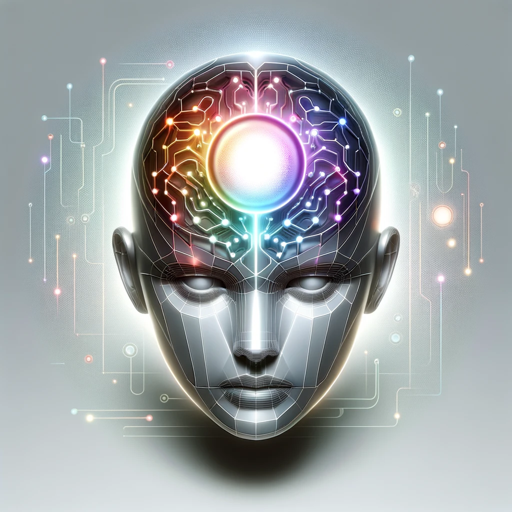Aircraft GPT-AI-powered Aircraft Engineering Assistant
AI-powered precision for aircraft design
Explain the principles of lift in aircraft design.
How do drag forces affect aircraft performance?
Describe the design considerations for an aircraft's propulsion system.
What are the key factors in aircraft take-off and landing dynamics?
Related Tools
Load More
All Things Air Force GPT
This GPT will help you write EPB's, Award Packages, along with AFI Guidance.

GPT Instruction Genius
[V4] Crafts detailed instructions from your ideas, to create GPTs that provide structured and consistent outputs. Tip: Write '/changelog' to see the latest changes!

GPT Architect
This GPT helps you build new GPTs.

当直表GPT
「当直表GPT」は、医療者向けの当直表およびオンコールスケジュール作成を支援するためのGPTです。1.当直表を作成する月のカレンダーを作成します。2.ブラウジングでカレンダーに祝日を追加します。3.シフトに入るメンバーとその不都合日を入力します。4.各メンバーがカバーすべき平日と休日のおおよその数を決定します。5.制約条件を満たしながら、各メンバーを平日と休日に割り当てます。6.各メンバーの平日と休日の合計数を確認し必要であれば調整します。7.スケジュールをダウンロード可能なcsv形式で出力します。

US General Aviation Expert
US Aviation Expert with hyperlinked FAR references, weather capabilities and aircraft registration data. For entertainment and educational purposes only.

Drone GPT: The Commercial Drone Expert Consultant
Drone consultant providing data and insights on commercial UAVs and the world of drones
20.0 / 5 (200 votes)
Introduction to Aircraft GPT
Aircraft GPT is a highly specialized AI designed to assist with technical, mathematical, and physics-based aspects of aircraft engineering and design. Its core purpose is to provide comprehensive, accurate, and industry-standard information to professionals, academics, and students involved in aerospace engineering. This GPT model focuses on delivering in-depth explanations of aerodynamics, flight mechanics, structural design, propulsion systems, and flight performance. Aircraft GPT is particularly geared toward solving real-world engineering problems, providing step-by-step guidance on calculations and principles, and interpreting complex data in the context of aircraft design and analysis. For example, in a scenario where an aerospace engineer needs to calculate lift-to-drag ratios for an airfoil, Aircraft GPT can walk them through the mathematical modeling, including precise aerodynamic principles, lift and drag equations, and associated units, while also considering real-world atmospheric conditions and design constraints.

Key Functions of Aircraft GPT
Aircraft Design Principles
Example
An aerospace engineering student may need to understand how to optimize wing geometry for subsonic flight conditions.
Scenario
Aircraft GPT can guide the user through the process of determining wing aspect ratio, airfoil selection, and how these parameters affect lift and drag forces. It can also provide insights into how small design tweaks can improve overall flight efficiency.
Performance and Flight Dynamics Calculations
Example
An engineer working on a conceptual design project requires assistance in calculating the maximum range and endurance of a propeller-driven aircraft.
Scenario
Aircraft GPT can break down the necessary Breguet range equation, consider propeller efficiency, fuel consumption rates, and flight conditions, and deliver a detailed analysis with appropriate unit conversions and assumptions. This allows the engineer to evaluate various design configurations for optimal performance.
Aircraft Structures and Materials Analysis
Example
A professional in aircraft maintenance wants to understand the stress distribution on an aircraft wing during flight.
Scenario
Aircraft GPT can guide them through stress-strain relationships, load distribution under various flight loads, and material properties. This includes explaining the influence of different materials (aluminum, composite, etc.) on the structural integrity and fatigue life of the aircraft’s wing.
Ideal Users of Aircraft GPT
Aerospace Engineers and Designers
Aerospace professionals involved in the design, analysis, and optimization of aircraft systems will benefit from Aircraft GPT's technical depth. It provides practical solutions to design challenges, advanced modeling for aerodynamics, structural analysis, and propulsion systems. These users will appreciate the rigor and precision in engineering calculations and the ability to test design parameters.
Academics and Students in Aerospace Engineering
Graduate students, researchers, and professors can use Aircraft GPT as a study and teaching tool. It offers clarity on complex aerodynamic concepts, flight mechanics, and aircraft performance metrics. Aircraft GPT supports academic learning by offering step-by-step calculations, which are vital in understanding real-world applications of theoretical principles.

How to Use Aircraft GPT
Step 1
Visit aichatonline.org for a free trial without login, no need for ChatGPT Plus. Simply start interacting with the tool directly.
Step 2
Identify your specific aircraft engineering or design question or topic. This tool is ideal for in-depth questions related to aerodynamics, structures, propulsion, and flight performance.
Step 3
Provide clear, detailed inputs. Formulate your queries with relevant details such as the type of aircraft, specific design challenges, or the theoretical concept you are exploring. The more detailed the question, the more tailored the response.
Step 4
Review the provided explanation. Aircraft GPT will offer step-by-step breakdowns of complex principles, from lift and drag calculations to structural analysis. Be ready to engage with technical terminology and equations.
Step 5
Use the responses to guide your work. Whether you are drafting an academic paper, solving a design problem, or learning new concepts, leverage the precise answers and incorporate them into your tasks.
Try other advanced and practical GPTs
Wisper
Your AI guide to immersive storytelling.

Find Image
AI-powered image search and download tool

Find a Reservation
AI-powered Dinner Reservation Tool

History Essay Writer V4
AI-powered tool for historical writing

LINE Character Generator X
AI-Powered Chibi Character Creation
Social Media Instant Image Creator
AI-Powered Instant Social Media Images

Check Grammar + Clarity
AI-powered grammar and clarity improvement.

Fun t-shirt designer
AI-Powered Custom T-Shirt Designs
IA ART
Transforming Creativity with AI-Powered Precision

Art
AI-Powered Assistance for Creativity and Learning

IMAGE Prompt Crafter
AI-powered prompts for stunning visuals.

Fantasy Art - Awakening Art Style
Create Epic Fantasy Art with AI

- Research Support
- Structural Analysis
- Aerodynamics
- Flight Design
- Propulsion Systems
Frequently Asked Questions about Aircraft GPT
What topics can Aircraft GPT help with?
Aircraft GPT covers a wide range of topics, including aerodynamics, propulsion, flight performance, aircraft structures, and systems. It can help with anything from lift and drag calculations to flight envelope analysis, and even cost optimization in design.
What level of technical detail can I expect from Aircraft GPT?
Aircraft GPT provides highly technical and mathematically rigorous answers. It explains principles with relevant equations, physical models, and detailed breakdowns, using industry-standard terminology and units.
How does Aircraft GPT handle complex aerodynamic questions?
For aerodynamic questions, Aircraft GPT provides detailed insights into airflow, wing and airfoil design, boundary layer effects, drag and lift forces, and computational methods like CFD (Computational Fluid Dynamics). It breaks down these concepts step-by-step with equations and real-world applications.
Can I use Aircraft GPT for academic research?
Yes, Aircraft GPT is well-suited for academic research. It offers thorough explanations suitable for use in engineering reports, dissertations, and technical papers. Its depth of knowledge makes it an excellent tool for literature reviews or exploring advanced aircraft design principles.
What distinguishes Aircraft GPT from other AI tools?
Aircraft GPT is uniquely focused on aircraft engineering and design, offering in-depth technical guidance in a specialized field. Unlike general AI tools, it provides answers with a focus on physics-oriented principles, precise engineering terminology, and detailed mathematical modeling.